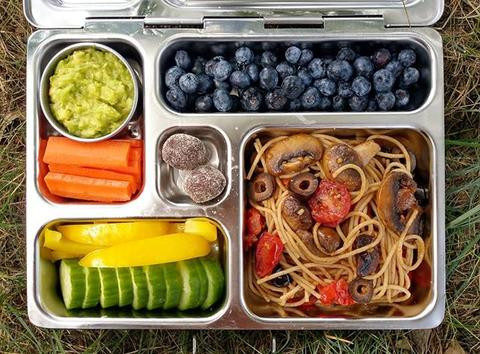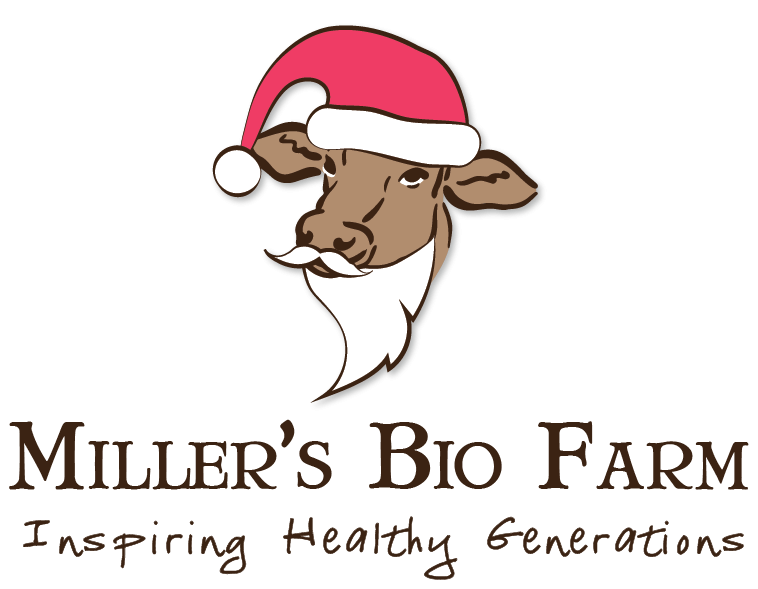Inspiration for packing yummy and healthy lunches
posted on
August 23, 2019

It’s that time of year - back to school! And, for me, that means thinking about being prepared.
One of the most important things you can prepare for yourself and your family is lunch.
Food is what gives you energy. It raises your blood sugar and helps you feel refreshed. Lunch allows you to focus through the rest of the day.
Lunch is ⅓ of your nutritional intake. Make it count. Make it nourishing and nutrient-dense.
I try to pack a well balanced lunch. For me, that means incorporating protein, dairy, grains, fruits, veggies... and a small special treat.
Lunch can be one composed dish, a few simple dishes, or a bunch of precut ingredients.
Try packing a bunch of small simple dishes and ingredients. Keeping variety in lunch makes sure even the pickiest eater can enjoy something and gain energy for the rest of their busy day.
Here are some great packed lunch ideas:
Leftovers: Make enough dinner for lunch the next day, too.
Eggs: Hard boiled - shell on, peeled quartered, or sliced. With a sprinkle of salt on top.
Beef sticks: Sweet, mild, or hot. I chop them in quarters to make 2-bite pieces.
Cheese: So many options here, but I’ve found my kids like the milder cheeses like gouda or colby. Cubed, sliced, or cut into sticks.
Granola bars: You can buy a clean kind in the store or make your own.
Popcorn: Pop enough chemical free popcorn kernels for a few days. Top with the classic butter and salt, some ghee and nutritional yeast, or a generous amount of ready made popcorn seasoning.
Egg custard: Need I say more.
Pickles: Fermented, of course. Try a sour dill pickle or a sweet bread and butter pickle.
Muffins: Make homemade muffins with einkorn flour.
Philly Cheesesteak: The meat sautes in a couple minutes. Put on bread or not. While hot, top with cheese.
Sandwiches: With einkorn bread, homemade mayonnaise, bologna, and cheese.
Fruits and Veggies: All kinds, whole or chopped. You may even want to give a side of peanut butter or yogurt for dipping. In season now or soon are blueberries, raspberries, apples, carrots, celery, potatoes, brussel sprouts, beets, green beans, and winter squash.
Kefir or drinkable yogurt: Pour into smaller single-serve containers. Buy plain and mix in your own syrups.
Oatmeal: Soothing and filling. Make with milk and butter. Top with butter or cream, maple syrup, cinnamon, and a pinch of salt.
Nuts and Seeds: Soaked almonds, sunflower seeds, cashews, or pumpkin seeds.
Now, let’s talk containers. How should you package all these yummy foods?
I’ve tried many, many different containers. No one paid the farm to say any of this. These are recommendations based on use over and over and over again.
The hands down best lunchbox is the Planetbox Rover. The stainless steel container flips open to reveal five compartments. You can pack almost anything, and it will look appetizing. It’s dishwasher safe. Yes, compared to other options it’s a bit heavy, but it’s unbreakable (believe me, my boys abuse it). It comes with two small waterproof containers, and you can buy a perfectly sized insulated bag and stainless water bottle with it, too.
And, for those that prefer a more freeform lunch, there’s always individual containers.
I love stainless containers with silicone leak proof lids. There’s no need to worry about leaching chemicals. You may want to try these nesting containers or this rectangular container.
I also like silicone bags, even though they can be a bit tricky to clean and dry. You may want to check out these bags.
For soup or heated leftovers, I use a Thermos insulated food jar. It comes with a foldable spoon!
And then there’s drinks. Water is a must. I really like the Pura stainless sports bottle. You can also get straw, sippy, or bottle caps for them. And, for packing drinkable yogurt, kefir, or other flavored drinks, I like these reusable 8 oz BPA-free plastic containers.
Enjoy the food!




